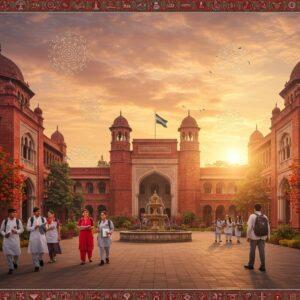
Delving into the Kannada language offers a glimpse into one of India’s oldest Dravidian languages. Spoken by millions in Karnataka, Kannada holds immense historical and cultural significance. Understanding its development helps preserve cultural heritage and promotes intercultural understanding. This exploration of Kannada’s origins, evolution, and influence provides valuable insights into its rich tapestry.
Origins and Evolution of Kannada
The Kannada language, with its rich 2,000-year history, originates from the proto-Dravidian language family. The Halmidi inscription, dating back to the 5th century, stands as the earliest evidence of written Kannada, offering a fascinating glimpse into its early form.
Prakrit and Sanskrit significantly influenced Kannada’s development, impacting its vocabulary and script. Sanskrit, in particular, played a crucial role due to cultural, religious, and scholarly exchanges, deeply embedding itself within Kannada’s linguistic framework.
The transition from Old Kannada to Middle Kannada, around the 12th century, marked a pivotal moment in its linguistic journey. This period witnessed substantial changes in grammar and vocabulary, reflecting Kannada’s dynamic nature and adaptability across different eras and influences.
Understanding these origins is essential for preserving Kannada’s cultural heritage. It underscores the importance of studying linguistic history to appreciate the richness of regional identities and foster intercultural understanding.
Poojn.in: Bridging Language Barriers for Puja Essentials
Poojn.in simplifies the process of finding puja items across diverse Indian languages and traditions. Our comprehensive product descriptions include names in multiple languages, ensuring you can easily identify the specific items you require. This multilingual approach facilitates a seamless puja shopping experience for everyone, regardless of their linguistic background.
For instance, Guggul, a significant puja ingredient, is listed with its names in various languages:
- Kannada: ಗುಗ್ಗುಲು (guggulu)
- Telugu: గుగ్గులు (guggulu)
- Bengali: গুগ্গুল (guggul)
- Malayalam: ഗുഗ്ഗുല് (guggulu)
Our website offers robust multilingual support, enabling you to:
- Search for products using local language names, making it easier to find what you need regardless of your linguistic background.
- Read detailed product descriptions in your preferred language, ensuring a clear understanding of the item’s purpose and significance.
- Comprehend usage instructions across different regional traditions, promoting accurate and respectful observance of rituals.
- Compare similar items used in various regional customs, expanding your knowledge of diverse practices and facilitating informed choices.
We stock a wide array of authentic puja items used across India, including:
- Regionally specific agarbattis and dhoop, catering to diverse olfactory preferences and traditional practices across different regions.
- Traditional puja thalis with local variations, respecting the unique customs and aesthetics of various communities.
- Sacred threads (mauli/kalava) as per different customs, ensuring authenticity and adherence to specific ritualistic requirements.
- Specialized puja kits for regional festivals, providing convenience and completeness for observing specific celebrations.
Explore Our Complete Puja Collection at Poojn.in
Whether you follow Kannada, Telugu, Tamil, or other regional traditions, Poojn.in ensures you obtain the correct puja items with clear descriptions in multiple languages. Our commitment to linguistic inclusivity makes us the ideal destination for all your puja needs.
Kannada’s Enduring Legacy
Kannada’s journey showcases its resilience and adaptability. This ancient language, with its deep roots, narrates stories of cultural exchange and continuous evolution. Exploring Kannada’s connections with other languages illuminates its vibrant history and enduring influence.
Today, Kannada thrives, holding a special place in the hearts of its speakers. It serves as a bridge between the past and present, reflecting the region’s diverse heritage. Embracing Kannada’s legacy means celebrating its role in shaping traditions and fostering unity.
Preserving and understanding Kannada transcends mere language; it represents cherishing a shared history and identity. As we move forward, let us honor this beautiful language and ensure it remains a treasured part of our cultural tapestry.
FAQs: Kannada and Other Languages
What are Kannada’s origins? Kannada belongs to the Dravidian language family, sharing ancestry with languages like Tamil, Telugu, and Malayalam. This shared heritage contributes to similarities in grammar and vocabulary.
How does Kannada differ from Telugu? While both belong to the Dravidian family, Kannada and Telugu have distinct scripts, phonetics, vocabulary, and pronunciation. These differences reflect their independent development and regional influences.
What similarities exist between Kannada and Tamil? Kannada and Tamil share significant grammatical structures and vocabulary due to their Dravidian roots. However, their scripts differ, highlighting their independent evolution despite shared ancestry.
How has Kannada influenced other languages? Kannada has enriched neighboring languages, particularly in vocabulary, due to historical interactions. Its influence extends to languages like Telugu, Tamil, and even Marathi, demonstrating its impact on the linguistic landscape.
Why are Dravidian languages considered similar? Dravidian languages, including Kannada, share common grammatical features and vocabulary, stemming from a long history of mutual influence and cultural exchange.
Does knowing Kannada aid in learning other South Indian languages? Yes, understanding Kannada can facilitate learning other South Indian languages like Tamil and Telugu. Their shared Dravidian roots result in similarities in grammar and vocabulary, making the transition smoother.
What is Kannada’s role in Karnataka’s cultural identity? Kannada is integral to Karnataka’s cultural identity, serving as the state’s official language. It is deeply interwoven with the region’s traditions, literature, and heritage, representing a core element of its cultural fabric.
How are Kannada and Malayalam related? Both Kannada and Malayalam are Dravidian languages, sharing some similarities in grammar and vocabulary. However, they have distinct scripts and pronunciation, reflecting their independent development and regional influences.
More information on Sanskrit Mantras


